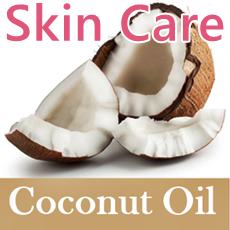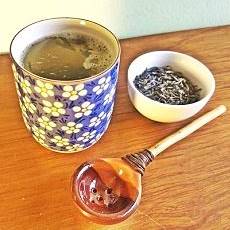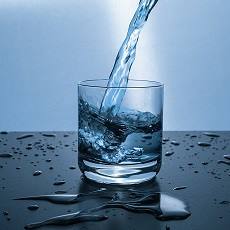Sunburn
Sunburn: treatment, prevention & sun protection
Fact Checked
×All the content published in our website is fact checked to validate its accuracy.
Visit our guidelines web page to learn more about our strict processes regarding how we review our content's sources: reliable and reputable journals, media websites, universities, colleges, organizations, and professionals.
Our articles are based on scientific evidence, and the references are included in its footnotes, which are clickable links to sound scientific papers.
First published: 28.Aug.2023
Overview
Sunburn is a burn to the skin caused by the sun’s ultraviolet rays.
It causes redness, inflammation, and pain; and a long term risk of skin cancer plus premature skin aging
Learn how your skin type, location, and medications can worsen sunburn and how the correct use of sunscreeen, sun protective clothing and fabrics, hats, sunglasses, shade and knowing the UV Index can help you prevent sunburn.
Learn what sunscreens are, what SPF mens, and the importance of blocking both UVA and UVB rays.
We also include tips and advice on how to treat sunburn.
In this Article (Index)
- What is Sunburn
- Effects of Sunburn
- Factors that can Worsen Sunburn
- Skin Phototype
- Treating Sunburn
- Oatmeal and Sunburn Treatment
- Prevention and Sun Protection
- Sun-protective clothing
- Sunscreen
- Sun Protection Factor (SPF)
- Broad Spectrum Sunscreen: UVB and UVA rays
- Apply Sunscreen correctly

What is Sunburn?
Sunburn is a burn to the skin caused by the sun's radiation.
The sun's ultraviolet (UV) rays or tanning beds' powerful UV lights can burn the skin exposed to it.
The immediate effect it the damage to the sunburn but it also has long term effects such as an increase in the skin of skin cancer and the premature solar aging of the skin or photoaging that causes discolored and unevenly pigmentation, age spots, freckles, wrinkles, sagging, red veins, and altered wound healing. · Premature skin aging, including uneven discolored pigmentation, age spots, freckles, red veins, wrinkles and altered wound healing, and sagging.
Effects of Sunburn
Too much exposure to the sun's ultraviolet radiation burns the skin and it turns red within hours. This sunburn will continue to develop and irritation, pain and redness will peak at around 24 hours after the exposure and continue for the next 1 to 3 days. Depending on the exposure and severity you can suffer the following effects:
- Skin inflammation, pink or red on white skin (harder to detect on darker skins).
- The skin feels warm or hot if you touch it.
- Pain, itching, tenderness, swelling.
- If you have second-degree sunburn, small, fluid-filled blisters will appear in the area.They may break.
- Fever, headache, fatigue and nausea (in severe sunburn cases).
As part of the healing process most people will also peel, with the body shedding dead and damaged skin cells and making way for the new skin underneath.
Factors that can worsen sunburn
Sunburn can be influenced by many different factors, knowing them can help prevent severe cases.
- Duration. Long exposures can increase sunburning.
- Intensity. Several factors affect the intensity of the sun's radiation:
- Time of the day: The time between 10 AM and 4 PM is when the sun's rays are strongest.
- Season: During summer with the sun overhead, its rays are stronger than at the same time of the day in winter
- Location: Closeness to the Equator causes higher UV exposure
- Elevation: At higher altitude there is a thinner layer of atmosphere to protect you from the UV rays.
- Cloud coverage: less cloud coverage means more UV rays reaching the ground.
- Ozone layer depletion: some parts of the globe have a thinner ozone layer in the atmosphere in areas close to the North and South poles, it is much more depleted over Antarctica.
- Medications. Some medicine increases the risk of sunburn, we list some of them: tetracyclines, sulfonamides, fluoroquinolones, anti-inflammatory drugs like benoxaprofen, carprofen, and piroxicam, fluoroquinolones, retinoids, St. John's wort, anti-cholesterol drugs (lovastatin). Always read the product label and ask your physician if you have doubts.
- Fitzpatrick Skin phototype: (more below), as a rule of the thumb, the lighter the color of the skin, the easier it is to sunburn.
- Tanning. The deliberate exposure to the sun's rays to acquire a darker skin tone not only ages the skin and increases cancer risk, it can provoke sunburn.
- Protection. Using sunscreen incorrectly can lead to sunburn (learn more below).
Skin Phototype
The Fitzpatrick skin phototypes were developed in 1975 by Harvard Medical School dermatologist Thomas Fitzpatrick to classify how a person's skin types.
Based on the color of skin and eyes, how it responds to sunlight and its tanning.
Fitzpatrick's Skin Phototypes
- Type I: Pale white skin, extremely sensitive, it always burns and never tans. Example: red hair with freckles.
- Type II: White skin, burns easily, tans minimally, sensitive skin. Example: fair skinned, fair haired Caucasians, northern Asians.
- Type III: Light brown skin, sensitive skin, may burn sometimes, slowly tans to light brownLight brown skin. Example: darker Caucasians, some Asians.
- Type IV: Moderate brown ir olive skin, hardly ever burns, tans easily always to moderate brown. Example: Mediterranean and Middle Eastern Caucasians, southern Asians, Latinamericans.
- Type V: Dark brown skin, rarely burns, tans well and easily, resistant skin. Example: some Hispanics and Africans.
- Type VI: Black skin, deeply pigmented dark brown to black skin. Never burns, very resistant skin, deeply pigmented. Example: darker Africans, Australian Aboriginals, Negrito.
Those with a skin phototype classed as Type I, II or II have a higher risk of sunburn caused by a lack of UV-blocking melanin pigment in the skin. Very little sun radiation will provoke redness and sunburn.
Treating Sunburn
Sunburn will mostly heal on its own without any need ro treatment. The usual steps taken to manage or treat sunburn are the following:
- Keep out of the sun. Avoid exposure to the sunlight to reduce further damage to the skin.
- Pain management: use non-steroidal anti-inflammatories to reduce pain and swelling.
- Keep hydrated. Avoid dehydration, drink plenty of fluids.
- Soothe the skin. Topical creams such as hydrocortisone cream reduce the swelling, itching, and redness caused by sunburn. Avoid local anesthetic creams. You can also apply an aloe vera cream.
- Cool the skin. Use a damp towel or cloth or a cool bath. Cool collodial oatmeal baths can soothe and moisturize the skin (learn more below)
- Don't touch the blisters! Avoid breaking them it will reduce the risk of infection. The blisters protect the skin beneath.
- Don't scratch the skin or remove the peeling skin.
- Wear loose-fitting clothing while the skin heals. Avoid friction and rubbing the burnt areas.
Some home remedies can cause more damage so don't ever apply petroleum jelly or butter to a sunburn (or any burn). Do not apply ice or ice packs either.
When to see a doctor?
Seek medical attention right away if you run a fever with sunburn, or in the case of severe burns you have large areas of blistering.
Also see your doctor if you have blisters around your lips or you become extremely sensitive to bright light. Certain medications can cause sensitivity to sunlight. Tell your doctor about all the prescription and nonprescription drugs that you are taking.
Oatmeal baths and sunburn treatment
There are many clinical trials that have studied the antioxidant and anti-inflammatory properties of oatmeal on many skin conditions including eruptions, itch, atopic dermatitis and sunlight. Oatmeal has different types of bioactive plant phenols with antioxidant activity and confer it its anti-irritant effects. Colloidal oatmeal used in treating sunburn is mostly a mixture of starch (65%), proteins (15%), lipids (10%), fiber (5%) and beta-glucans (5%). The combination of starches and beta-glucans are the cause for its water-retaining properties (2).
Homemade colloidal oatmeal
You can buy it in thse store or make your own using regular oatmeal (unflavored type) ground at home with your kitchen blender or grinder.
Preparation
Grind the oatmeal to a very fine powder. Add 1 cup of oatmeal to a full-size cool bath. The water will acquire a silky feel and a milky tint. If you can't grind it to a fine powder, grind it as much as possible and put inside a muslin bag, cheescloth or similar, and place it into the bath. It will not clog your drains.
Soak in the cool water for fifteen to twenty minutes, it will soothe and moisturize the skin. Don't use soap or any other cleaner. No need to rinse it off. Pat dry with a towel. Be careful as the tub may become slippery with the oatmeal.
Prevention and Sun protection
Prevention is easy and straightforward. Australia, with a large population of people with very white skin and strong sunlight year round, has plenty of experience with sunburn and skin cancer. Cancer Council Australia has the following tips and advice (3):
When you are in the sun, the best way to prevent sunburn is to ‘slip, slop, slap, seek and slide’. Cancer Council
- Slip on some sun-protective clothing that covers as much skin as possible.
- Slop on broad-spectrum, water-resistant SPF30+ sunscreen.
- Slap on a hat which is broad-brimmed or legionnaire-style to protect your face, head, neck and ears.
- Seek some shade.
- Slide on some sunglasses, making sure they meet SPF Standards.
Let's check each item in this list:
Sun-protective clothing
The fabric of clothes presents a physical block to sunlight. You should wear lightweight, tightly-woven clothing. Darker color fabrics provide greater protection from UV rays than ighter color fabrics.
Wet fabric protects less than dry fabric.
Consider using sun protective rating with a UPF rating of 50+. This is the highest grade and blocks up to 98% of UVA + UVB rays. So if you use this type of clothing only 1⁄50th of the sun's UV rays will reach your skin.
Outdoor wear maker Columbia states that "the data really supports it. If you look at all the UVA- and UVB-blocking protection that clothing provides, it exceeds sunscreen in all measures... In all cases, the sun-protective clothing outperformed the sunscreen" (4).
So for your outdoor activities consider UV protecting fabrics. On the beach, pool, on boats or watersports, you should use UV protecting swimwear and consider using long sleeved bathing suits (women) and long sleeve swim shirts (men).
Sunscreen
Sunscreen is a skin lotion that partially blocks UV radiation from reaching the skin.
It does this by two means:
1. Physical. It blocks the sunlight using certain mineral ingredients that act like a shield and scatter the rays before they penetrate your skin. These include zinc oxide and titanium dioxide. Roughly 5% of the UV rays are reflected and blocked, 95% are absorbed by the minerals and re-radiated as heat.
2. Chemical. Organic chemical ngredients such as avobenzone and octisalate absorb the UV rays and dissipate it as heat. The process degrades the organic compounds (that is why you have to reapply it periodically) and generates some free-radicals which are neutralized by antioxidants present in the sunscreen.

Sun Protection Factor (SPF)
SPF is a scale that says how long you can be exposed to the sun before its UVB rays start to burn your skin.
Say your skin starts to redden after 30 minutes, an SPF 30 will allow you to stay in the sun 30 times longer before you start getting sunbured. So theoretically it would allow you to stay 30 times half an hour = 15 hours
In the real world it is much shorter, sweat, friction with clothing, degradation under UV radiation, the sunscreen loses effectiveness so to play it safe, reapply your sunscreen every two hours and after swimming or heavy swetting, that can wash it off your skin.
Broad Spectrum Sunscreen: UVB and UVA rays
There is a wide range of radiation coming from the sun, not only visible light, but also ultraviolet (UV) radiation. Two kinds of them reach the earth's surface (5):
- UVB rays. These are responsible for sunburn, and they provoke skin cancer.
- UVA rays. They penetrate more deeply into the skin and play an important role in premature skin aging (photoaging) and skin cancer. There are 500 times more UVA rays in sunlight than UVB.
Traditional sunscreens are better at blocking UVB than UVA rays. The SPF factor printed on the sunscreen containers only relates to its ability to block UVB rays.
Only Broad Spectrum Sunscreens also protect you from both UVB and UVA rays.
Water-Resistant
Water and sweat washe the sunscreen away so it is important to use one that remains effective while swiming or sweating. There are no "waterproof" sunscreens only those that remain effective for a certain period of time: 40 or 80 minutes.
Tips on Sunscreen
The UV rays are reflected by water, concrete, sand, snow, salt flats. This can duplicate the amount of UV rays reaching your skin.
The UV rays are potent, even if you are swiming three feet (1 m) beneath the water, it only blocks 20% of the UV rays.
Neither sunlight nor UVA rays turn your skin red like UVB rays do.
Cloudy days block only 20% of the UV rays reaching the ground.
Wear sunscreen daily: the sum of small daily exposures to UV radiation add up to damage your skin.
Apply sunscreen correctly
- Choose a sunscreen that is water resistant, has broad spectrum coverage (both UVA and UVB), and has a SPF of 30 or more.
- Check the expiration date of the product. Discard expired sunscreen from last summer!
- Apply before going outdoores. Your skin has to absorb the suncreen and this takes about 15 minutes. If you do it outdoors you will be unprotected during that time.
- Use plenty of it. Roughly one ounce (the equivalent of a shot glass) is needed to cover an adult body. Rub it into your skin.
- Cover all bare skin: neck, face, ears, top of your feet, bald patches on your head, face.
- Protect your lips. Use a lip balm with a SPF of at least 15-30.
- Reapply at least every 90 minutes to 2 hours. If you swim or sweat profusely reapply immediately, even if you are using a water resistant sunscreen.
- Add sun protective clothing as an extra barrier
Hat: protecting your head, face, neck and ears
Hats provide a physical barrier to UV radiation, UV-blocking fabrics add protection. Broad-brimmed, bucket hats with a wide brim and legionnaire style hats provide the most protection. Baseball caps do not protect the neck and ears. But, any hat is better than none.
Shade
Natural and artifical shade that screens you from direct UV rays from the sun or indirect UV reflected from the water, sand or snow is a great way to protect your skin.
Natural shade offered by trees is better if they have a dense canopy close to the ground.
Parasols, tents, canopies built with UV resistant shade cloth are effective and can block up to 95% of the UV rays while allowing the air to blow through.
Sunglasses
The eyes are sensitive to sunlight and can be damaged by UV rays. UV rays degrade the protein in your eyes' lenses turning it opaque (cataracts) and can damage the retina of children. Wear sunglasses that are designed to block these rays. Cheap sunglasses will block sunlight and widen your pupil allowing the nasty UV radiation to pour into your eye's interior.
UV levels
You can check the local UV Index forecast (Find your local UV Index) before going outdoors. If it is 3 or more, the radiation is strong enough to damage your skin. Use protection.
Avoid direct exposure to the sun between 10 AM and 4 PM.
Closing comments
Avoiding sunburn is easy, and it should be part of your daily routine whenever you go outdoors (even in winter).
Protect your skin with proper clothing, sunscreen, hats and glasses. Apply and reapply your SPF 30 or more, broad spectrum sunscreen on all your exposed skin, and decrease the risk of sin cancer and premature skin aging.
Follow our tips in case you get sunburned and don't forget to visit your dermatologist for a yearly skin exam. Early detection is important when it comes to skin cancer.
References and Further Reading
(1) Guerra KC, Crane JS. (2022). Sunburn. Updated 2022 Aug 28]. In: StatPearls [Internet]. Treasure Island (FL): StatPearls Publishing; 2023 Jan
(2) Pazyar N, Yaghoobi R, Kazerouni A, Feily A. (2012). Oatmeal in dermatology: a brief review. Indian J Dermatol Venereol Leprol. 2012 Mar-Apr;78(2):142-5. doi: 10.4103/0378-6323.93629. PMID: 22421643
(3) Cancer Council Australia. Slip, Slop, Slap, Seek, Slide. Accessed: Aug 28, 2023
(4) Columbia Why Scientists Say UPF Clothing Is Better Than Sunscreen
(5) University of Iowa, Hospital & Clinics. What is the difference between UVA and UVB rays? Last Reviewed: April 2018
(6) American Academy of Dermatology Association. How to apply sunscreen
NHS Sunburn. Last reviewed: 24 May 2022
Healthdirect Australia Sunburn and sun protection. Aug 2021
About this Article
Sunburn, A. Whittall
©2023 Fit-and-Well.com, 28 Aug. 2023. Update scheduled for 28 Aug. 2025. https://www.fit-and-well.com/health/sunburn.html
Tags: sunburn, sunburn protection, sunburn prevention, sunscreen, sunburn treatment, colloidal oatmeal


